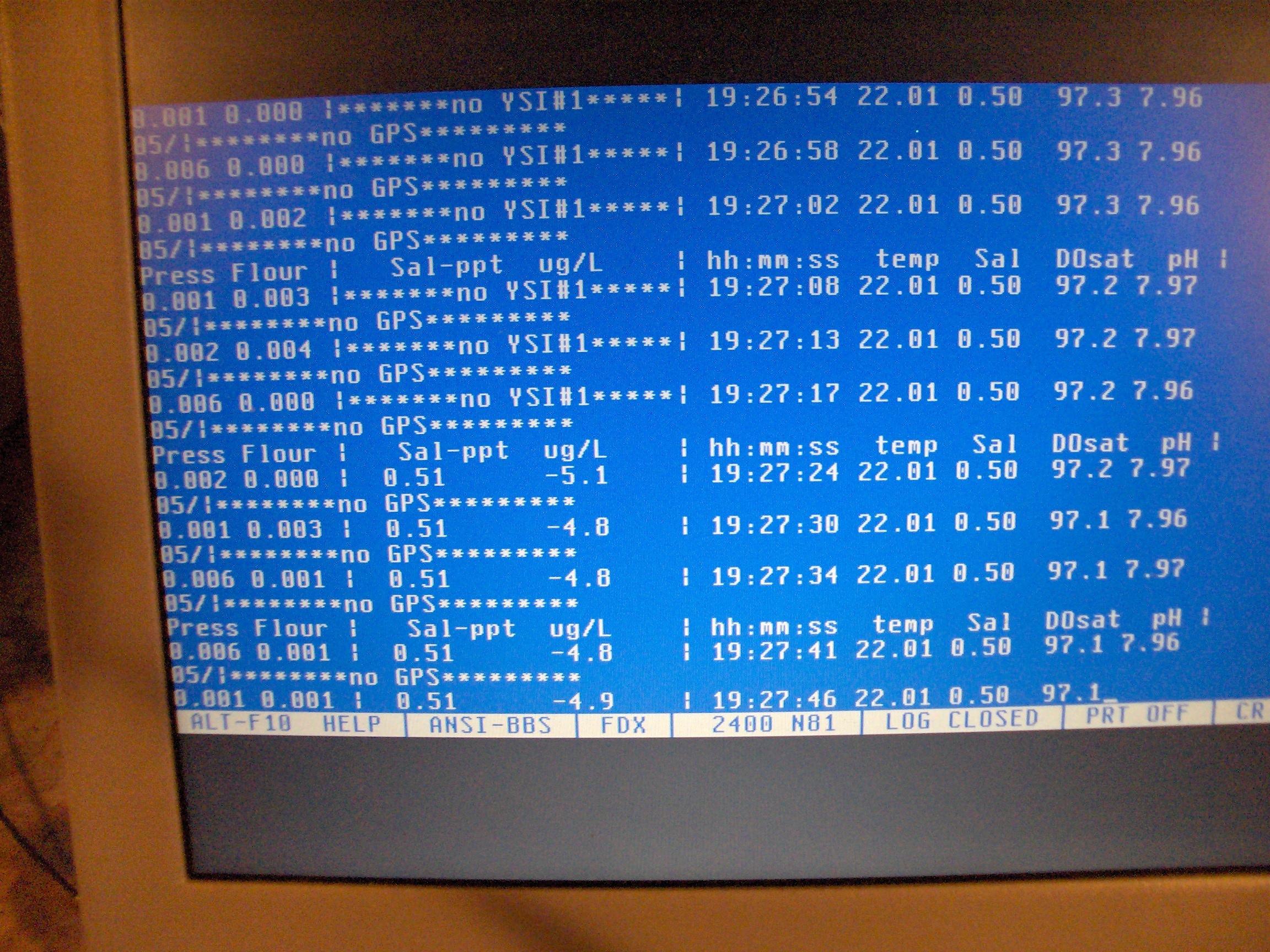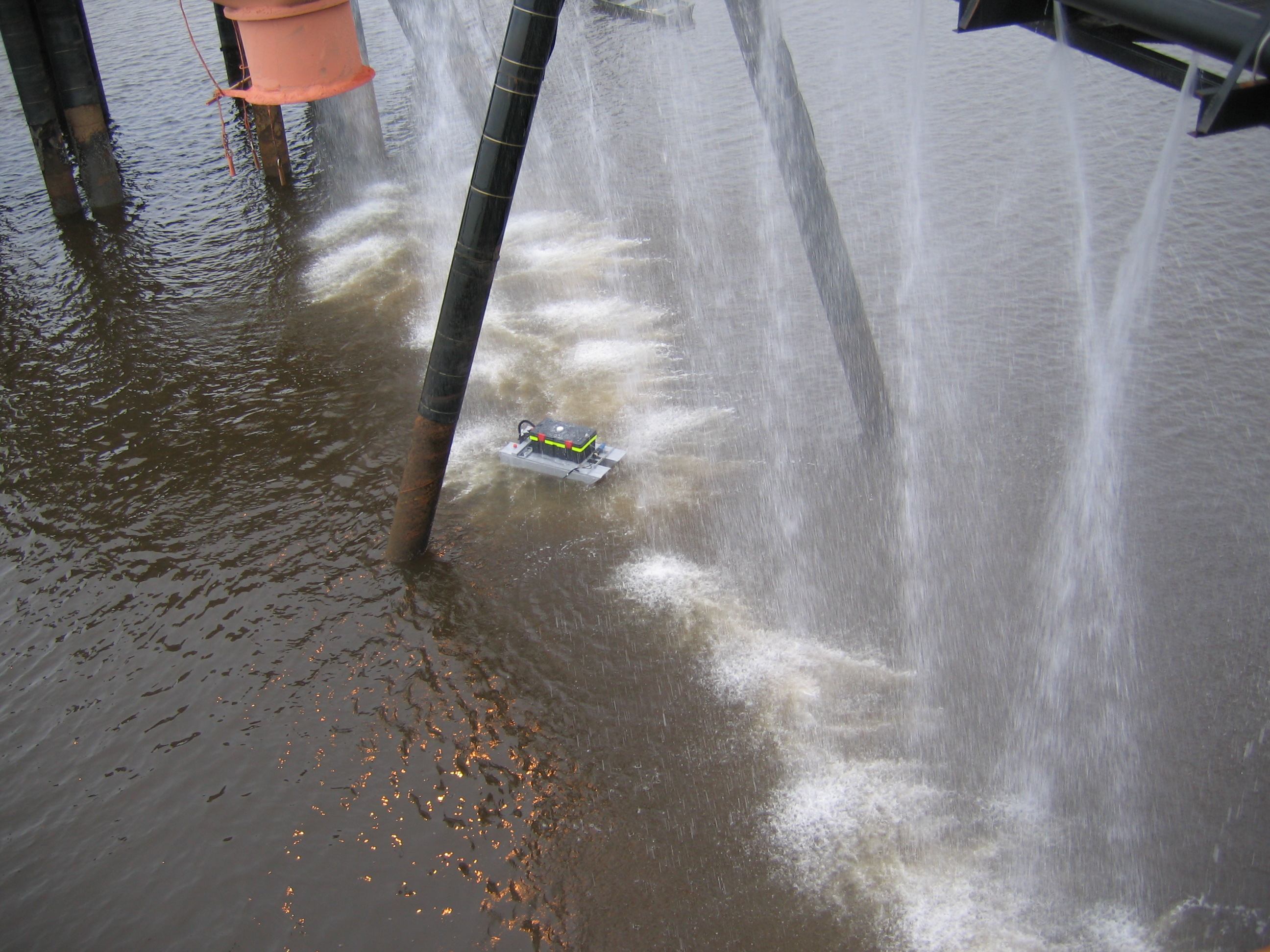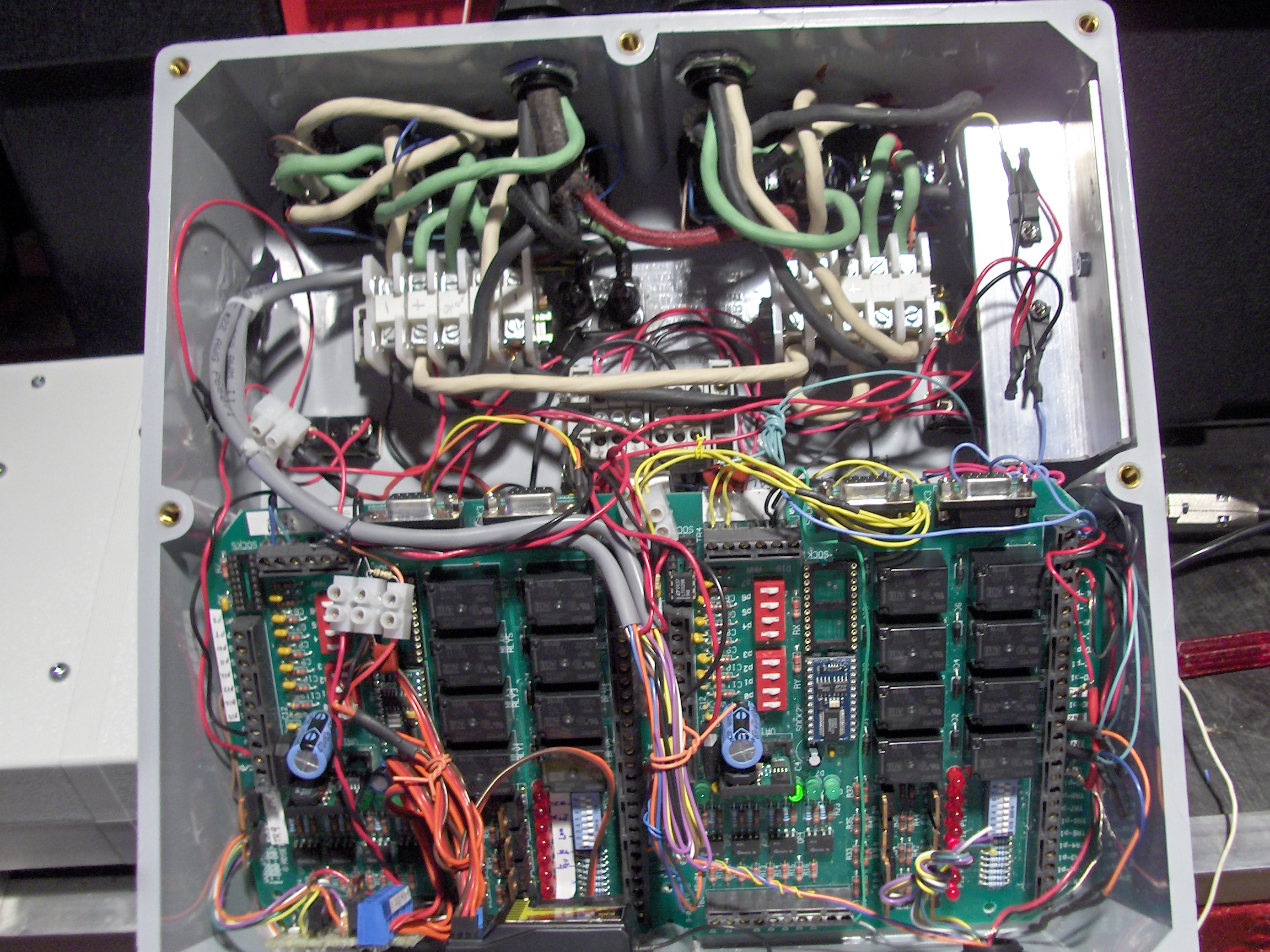Remote control Research Catarmaran
·· Attached are photos of a small remotely controlled research vessel which is Stamp controlled.
·· The boat itself is about 3.5 feet wide by 4.5 feet long. Its built with two foam floats covered with a nylon/kevlar material. The instrument package is a large Rubbermaid box which contains the deep cycle battery, the GPS, the Stamp control box. In the picture, the boat is measuring the salinity of a 1000 gal/minute brine spray to check whether the existing ocean salinity is being distrurbed outside acceptable limits. As shown, the boat is powered by an electric outboard motor but the boat also can be equipped with two fan drives for use in sewage lagoons where the "lumps" in the water affect the outboard.
· The Stamp control box is 12" x 12" by about 6" deep. The picture was taken during construction. The board on the left has a BS2 and receives the signals from a 5/6 channel R/C radio and provides control signals to the propulsion motors. When running the twin airdrive motors, the steering is by controlling the speeds of the two fans independently, fast-slow fwd-rev to provide steering without the need for a rudder. Key issues are not trying to reverse a motor suddenly when its going full speed forward. Motor circuits are rated at 40A continuous.
···Controlling the motors, two winches, an automatic water sampler and decoding the R/C signals takes over 500 lines of code.
·· The right hand board has a BS2sx and does all the data manipulation and transferring of data in real-time over the Maxstream data radios. This board receives sensor analog values, serial data from the instrument probes and serial data from the GPS unit. The GPS data also has data from a paddlewheel speed sensor and an auxilary depth sensor.
··· Data is displayed on a shore-based laptop running communication software like Hyperterm or Procomm. In operation, the comm software is set to 'log mode' and all the data is saved as a text file for further processing.
·· The boat itself is about 3.5 feet wide by 4.5 feet long. Its built with two foam floats covered with a nylon/kevlar material. The instrument package is a large Rubbermaid box which contains the deep cycle battery, the GPS, the Stamp control box. In the picture, the boat is measuring the salinity of a 1000 gal/minute brine spray to check whether the existing ocean salinity is being distrurbed outside acceptable limits. As shown, the boat is powered by an electric outboard motor but the boat also can be equipped with two fan drives for use in sewage lagoons where the "lumps" in the water affect the outboard.
· The Stamp control box is 12" x 12" by about 6" deep. The picture was taken during construction. The board on the left has a BS2 and receives the signals from a 5/6 channel R/C radio and provides control signals to the propulsion motors. When running the twin airdrive motors, the steering is by controlling the speeds of the two fans independently, fast-slow fwd-rev to provide steering without the need for a rudder. Key issues are not trying to reverse a motor suddenly when its going full speed forward. Motor circuits are rated at 40A continuous.
···Controlling the motors, two winches, an automatic water sampler and decoding the R/C signals takes over 500 lines of code.
·· The right hand board has a BS2sx and does all the data manipulation and transferring of data in real-time over the Maxstream data radios. This board receives sensor analog values, serial data from the instrument probes and serial data from the GPS unit. The GPS data also has data from a paddlewheel speed sensor and an auxilary depth sensor.
··· Data is displayed on a shore-based laptop running communication software like Hyperterm or Procomm. In operation, the comm software is set to 'log mode' and all the data is saved as a text file for further processing.





Comments
What depth sensor do you use? A few have asked for depth sensors in the past!
The rubbermaid waterproofed? Any Capsizes?
▔▔▔▔▔▔▔▔▔▔▔▔▔▔▔▔▔▔▔▔▔▔▔▔
·
Steve
"Inside each and every one of us is our one, true authentic swing. Something we was born with. Something that's ours and ours alone. Something that can't be learned... something that's got to be remembered."
The GPS is a Lowrance marine unit with the external speed sensor and external dual-frequency sonar unit. Dual frequency gives better results with soft bottomed lagoons. Think municipal sewage.
For accurate depth, there are also two 12-bit a/d channels that we use with pressure sensors from Hoskin Scientific.
The scientific devices are by YSI and give things like salinity, dissolved oxygen, rhodamine flourescence all sent to the stamp in a serial string.
The Rubbermaid box has actually worked quite well, even under the shower experiment shown in the pic. What's not shown is the main propulsion battery which is slung between the hulls in a pocket in the the Rubbermaid. No capsizes - pretty wide stance and also not much reserve bouyancy. The net result is to go semi-submersed when in any rough stuff.
Thanks for the interest.
Cheers
If this is from various depths, could you provide some details of what you use to collect the water, specifically how the container is opened/closed, or if it is a commercial product.
My intereste is in collecting samples for inspection under a microscope to see what types of "critters" and plankton are at various depths.
▔▔▔▔▔▔▔▔▔▔▔▔▔▔▔▔▔▔▔▔▔▔▔▔
John R.
8 + 8 = 10
The sampler was adapted for this project from an original design done by my customer, Natech Environmental. It is vacuum activated and can use a total of 8 sample bottles. The depth is set by the weighted sample tube, but I suppose there's no reason why one of the winches couldn't be used to vary the depth of the tube.
Natech will be making some mods to this sampler, so if you're interested, contact Jochen Schroer at natech@nbnet.nb.ca to discuss. From my observations of this sampler, it is so compact compared to the commercial units it should be commercialized.
Regards
So, it sounds like the source code for this project is propriatary, and will not be made available for the general public. Is that a correct assumption? I think it would be quite interesting to see different styles of coding, when applied to the control of multiple devices.
Cheers
·· The zipped file is the program set for the BS2sx.
··· Cheers
··